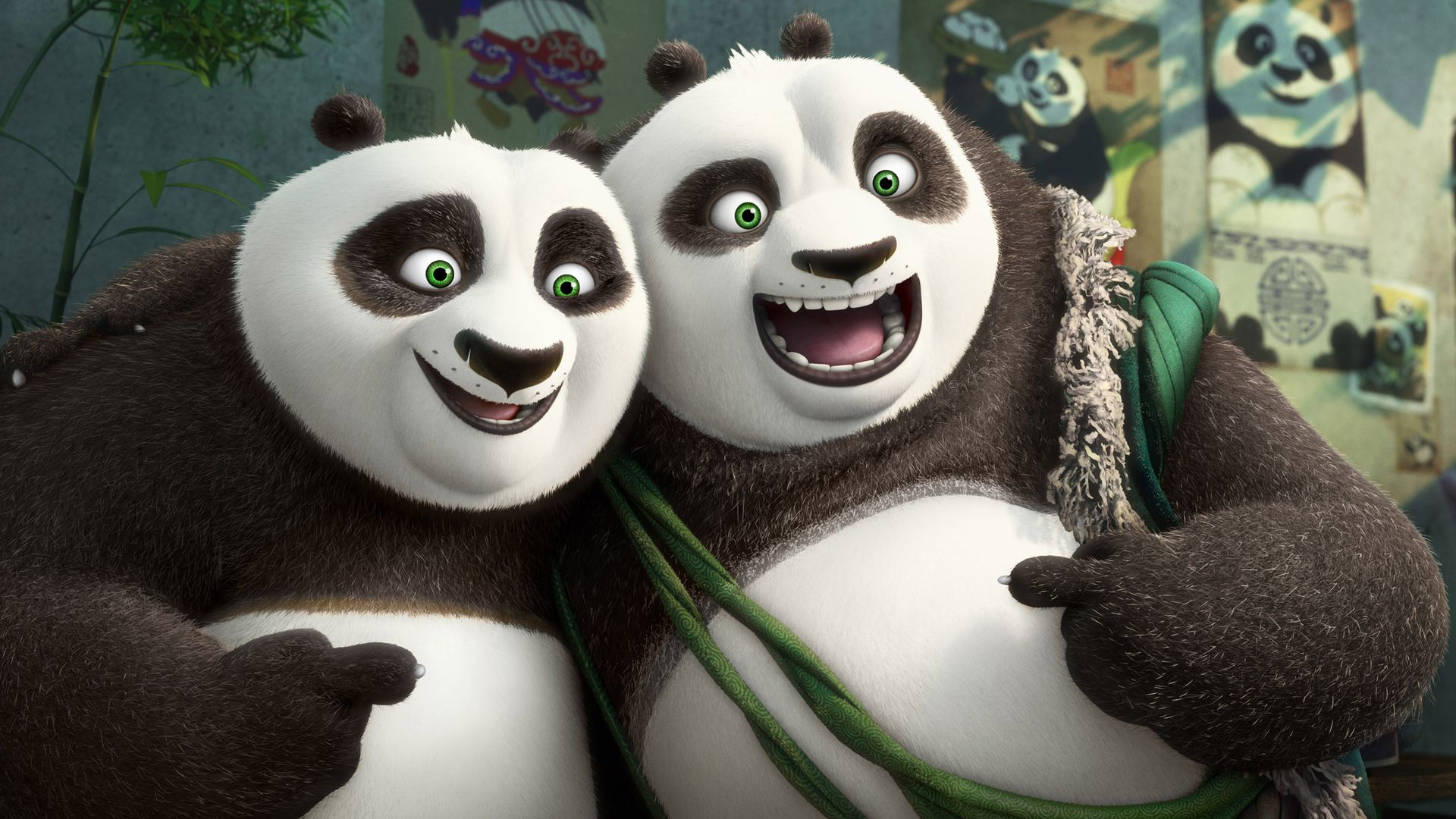Movie Review: ‘Kung Fu Panda 3’

(DreamWorks Animation)
By Matthew Fernandez
Jan. 29, 2016 6:51 p.m.
When the original “Kung Fu Panda” lost the Academy Award for Best Animated Feature to “Wall-E” eight years ago, I felt that film’s heart, humor and action had been cheated by the Pixar name and slightly better animation. Luckily, DreamWorks Animations kept the series alive and gave audiences even more fuzzy animals, stellar kung fu scenes and food jokes.
The newest installation in the series, “Kung Fu Panda 3,” continues the saga of Po, the Dragon Warrior (Jack Black). It is an elegant work of art that balances comedy, action and emotions like a kung fu master balances patience and skill.
At its core, “Kung Fu Panda 3,” like the rest of the series, is about self-discovery. Po is reunited with his long-lost panda father (Bryan Cranston) and goes on a journey to understand what being a panda means. The question, “Who am I?” is a major thematic point in the film, and Po helps others answer it while he struggles to do so himself.
Directors Jennifer Yuh Nelson and Alessandro Carloni have brought a supernatural, spiritual element to the film through the villain Kai (J. K. Simmons), which was specifically avoided in the first two installments. Nelson said having a supernatural villain was the only way to go for this film, since previous villains relied upon strength or intellect.
While I am not particularly a fan of bad guys with random spirit powers, I didn’t mind it in “Kung Fu Panda 3.” The spiritual aspect of the film puts Po at a disadvantage, and his struggle to gain mastery of his spiritual energy provides a more compelling journey than if he simply had to train harder.
However, Kai isn’t too compelling as a villain. In the original “Kung Fu Panda,” the evil Tai Lung was driven by his self-righteous rage and feelings of betrayal – the stereotypical yet relatable spurned son. Shen was the villain in the sequel, who possessed the poised and sinister air of a conqueror terrified of being overthrown. However, Kai doesn’t feel as fleshed out as either of them. Like Tai Lung, Kai is fueled by his self-righteous vengeance, but he doesn’t have the screen time or fight scenes to seem as much of a threat as the other villains.
In terms of voice acting, the ensemble cast brings credibility into the film. Jack Black is exuberant and energetic as ever and is easily relatable as he geeks out over his heroes or meets his birth father for the first time. His iconic, improvised catchphrase “skadoosh” is just as funny as the first time he said it.
Simmons and Cranston bring more gravity to the plot as Kai and Po’s father Li respectively. The Furious Five (Angelina Jolie, Jackie Chan, Lucy Liu, David Cross and Seth Rogen) have significantly more dialogue in the film (Chan only had seven lines in the first film), making it seem less of a waste to have them tied to the project.
The “Kung Fu Panda” series is notable for its unique aesthetic, blending traditional styles of Chinese art with modern animation. From beginning to end, the film is a spectacle of bold yellows and greens, and the expert interweaving of the 2-D and 3-D animation is still as arresting as it was in the first movie.
For a film series that has “kung fu” in the name, whirlwind fight scenes are a necessity. “Kung Fu Panda 3” delivers some of the best fight scenes I have seen in an animated film. The fights are well shot with great angles to capture all the action. Each movement is fluid and naturalistic and capitalizes on the unique fighting styles and anatomies of each animal. For example, Viper uses her coils to her advantage, while Crane uses his wings and Porcupine employs his quills as arrows in these engaging fights.
The best part about “Kung Fu Panda 3,” however, is not its gorgeous fights, but its ability to balance deep emotions and side-splitting comedy, switching between them at a moment’s notice. Most of the film’s laughs come from physical or visual comedy gags, like Po getting kicked in the nether region by an older panda. It also captures intense emotions, mainly centered around Po’s adopted goose father Mr. Ping (James Hong), who struggles with his fear of losing his son to his biological father. The instantaneous yet natural switching between tender emotion and silly jokes makes the film an appealing picture for audiences of all ages.
With no current plans for a fourth installation, “Kung Fu Panda 3” feels like a perfect conclusion to the series. The hero has finally discovered himself, and the student is now the teacher.
– Matt Fernandez


